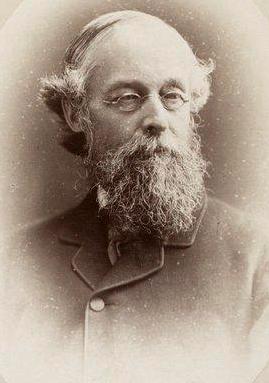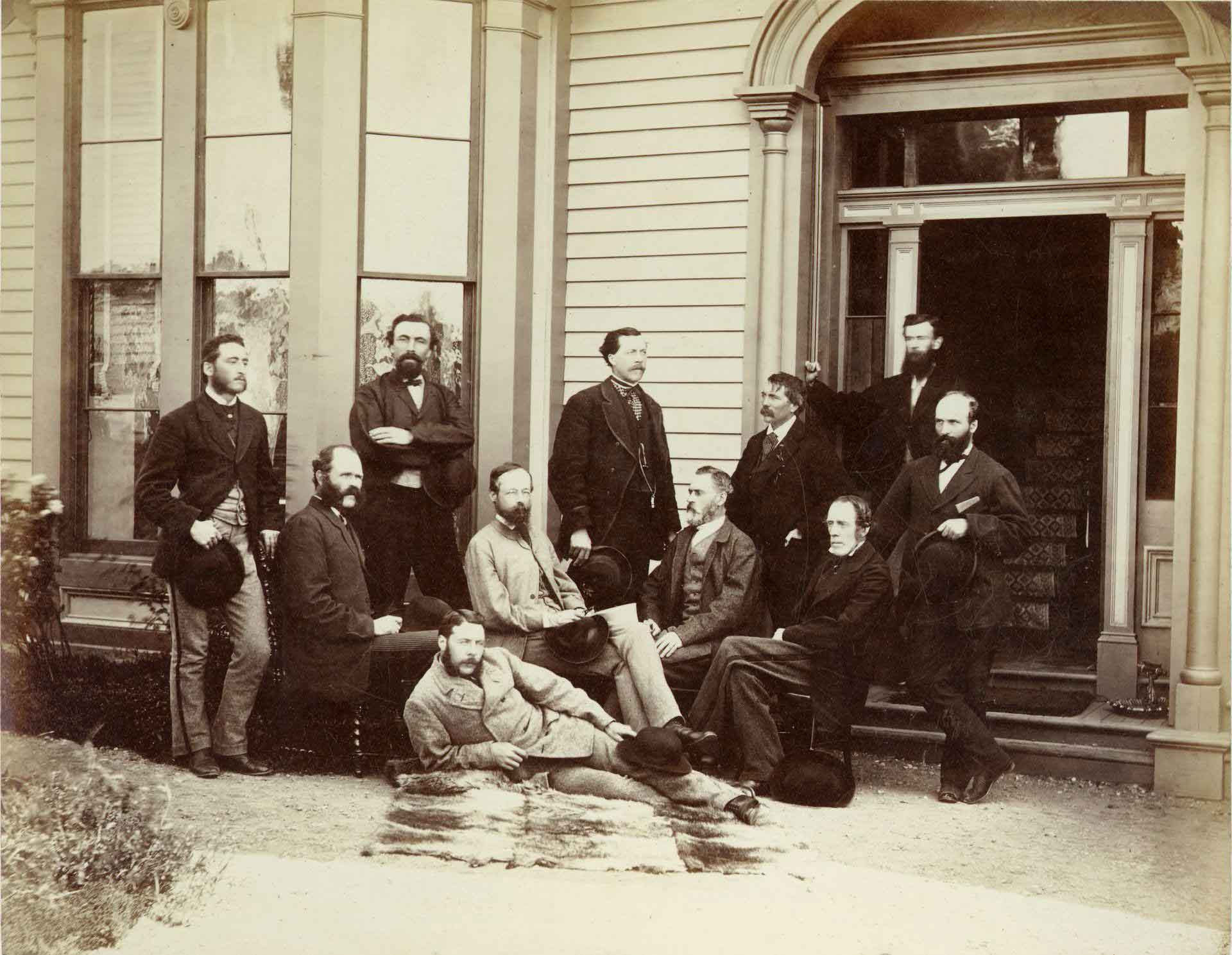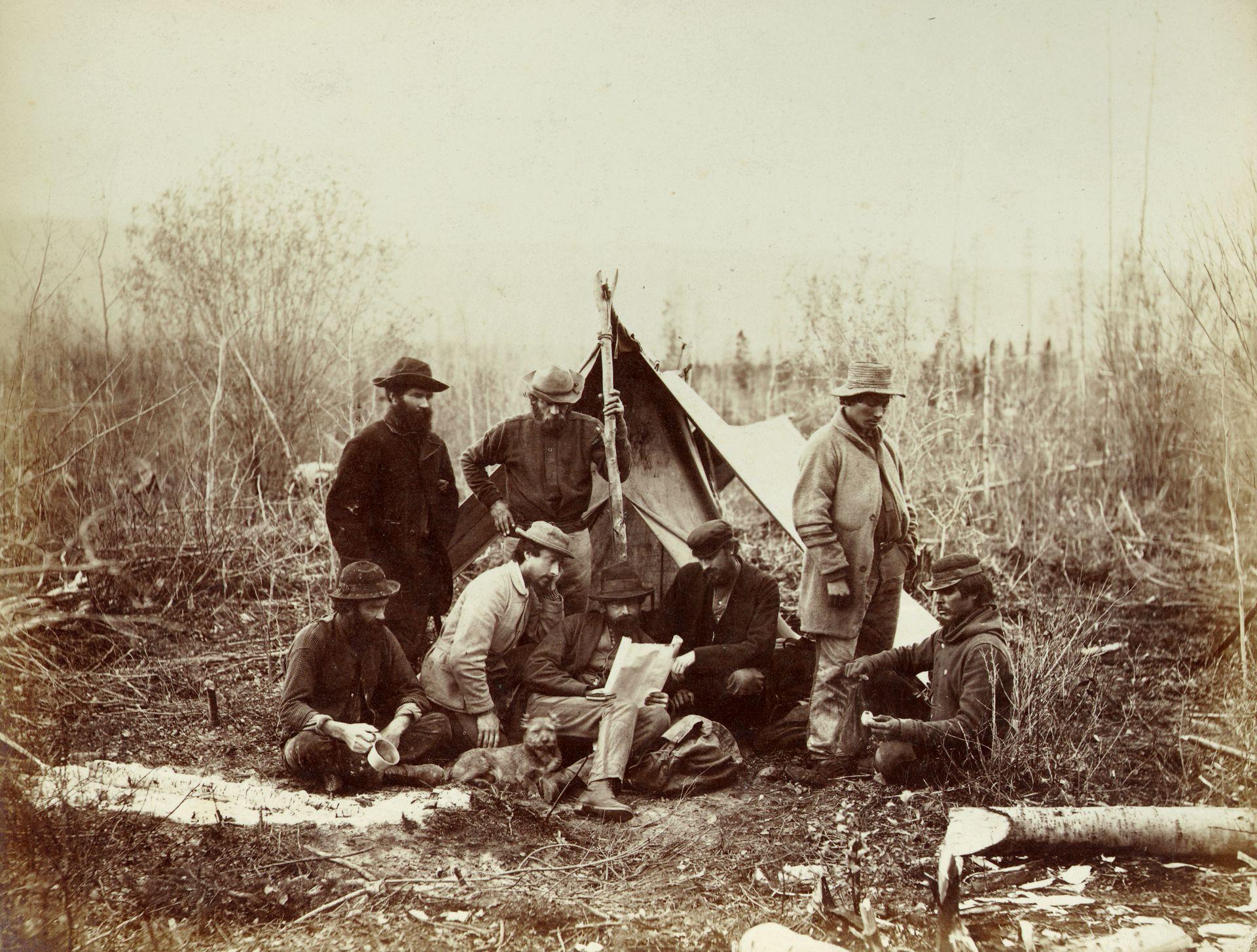Flows W into North Thompson River, S of Lempriere
52.35 N 119.1667 W — Map 83D/6 — Google — GeoHack
Name officially adopted in 1962
Official in BC – Canada
Presumably descriptive.
Probably named after Alfred Richard Cecil Selwyn (1824-1902), director of the Geological Survey of Canada, who in 1871 made a journey from Kamloops to Tête Jaune Cache and ascended the Fraser River some distance above Moose Lake.

Alfred Richard Cecil Selwyn
Wikipedia

The First Canadian Pacific R.R. and Geological Survey parties for British Columbia, July 22 1871 Left to right : L. N. Rheaumis, Roderick McLennan, A. S. Hall, West West Ireland, Alfred Selwyn, Alex Maclennan, Walter Moberly, C. E. Gilette, James Richardson, — — McDonald, George Watt.
Toronto Public Library

Geological Survey party in camp at Canoe River, October 14, 1871. Alfred Selwyn at centre with John Hammond (left centre) and Benjamin Baltzly (right centre)
Toronto Public Library
“At Moose Lake, the distance to Canoe River is only 18 miles south-westerly in a straight line,” wrote James McEvoy [1862–1935], who surveyed the area in 1898. “The intervening range of mountains, to which the name of Selywn Range is given, delivers most of its waters into the Canoe and McLennan rivers to the south-east, leaving a precipitous descent on the other side from the watershed to the Fraser River.”
In 1871, Alfred Richard Cecil Selwyn (1824-1902), then Director of the Geological Survey of Canada, made a journey from Kamloops to Tête Jaune Cache and ascended the Fraser River some distance above Moose Lake. Selwyn accompanied railway engineer Roderick McLennan on his survey of the Yellowhead Pass, coming along to study the strata of the area. Selwyn made careful notes of the geology in his field book until, somewhere in the Albreda River area, his horse ate the book. In 1875 Selwyn did field work for the Canadian Geological Survey on the Fraser and Peace Rivers.
Selwyn was born at Somerset, England. He was privately educated, and became assistant geologist on the staff of the Geological Survey of Great Britian. From 1852 to 1869 he was director of the Geological Survey of Victoria, Australia. From 1869 until his retirement in 1895 he was director of the Geological Survey of Canada. In 1852 he married Matilda. He was a fellow of the Royal Society, of the Geographical Society, and of the Royal Society of Canada, of which he was president in 1896. He died at Victoria, British Columbia.
Perhaps named for Jasper mountain guide Hans Schwarz, who ascended Mount Robson at least 12 times, or perhaps from the German word for black, according to Banff mountain guide Lloyd “Kiwi” Gallagher.
This feature was named by the Alberta-British Columbia Boundary survey in 1921. “Scarp” is short for escarp, a steep bank or wall.
George Monro Grant [1835–1902], on first seeing the Rocky Mountains in 1871, said, “The line was defined, and the scarp as clear, as if they had been hewn and chiselled for a fortification.”
Robert Roland Sansom (1892-1976) and Dorothy (b. 1904) Sansom moved to the McBride area in 1932. Robert, a native of Stanley, New Brunswick, was a conductor on the Canadian National Railway, and a member of the Farmers Institute and Elks. Dorothy, born in North Dakota, was active in the McBride Women’s Institute.
Salient means standing above or beyond the general surface or outline; jutting out; prominent among a number of objects.
While conducting the Alberta-British Columbia Boundary Commission survey in 1922, Arthur Oliver Wheeler [1860–1945] noted:
[T]he mass last named is that on which the triangulation station, entitled “Mons,” now “Salient S.”, is set at the extremity of its southern ridge. The basin in which this series of crossings of the watershed lies is a delightful park-like area, displaying wide tracts of open grasslands, interspersed with groves and scattering bunches of picturesque spruce trees, which gradually merge into dense bodies of forest growth as the open highlands slope downwards to the valley bottoms, through which wind the several larger streams. All through the open highlands little watercourses with crystal flows wander in many directions.